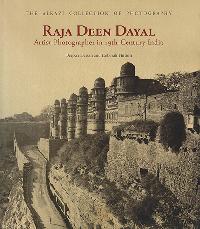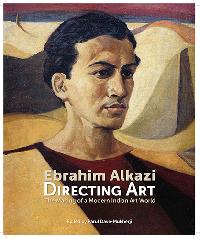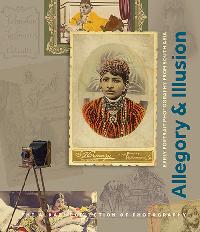Welcome to Heritage Galleries
Manufacturer / Exporter / Supplier Of Ebrahim Alkazi: Directing Art, Vintage Photography, Filmi Jagat Scrapbook, Raja Deen Dayal Artist Photographer in 19th Century India, Photography Services
Welcome to Heritage Galleries
Manufacturer / Exporter / Supplier Of Ebrahim Alkazi: Directing Art, Vintage Photography, Filmi Jagat Scrapbook, Raja Deen Dayal Artist Photographer in 19th Century India, Photography Services

During his lifetime, the path breaking and prolific lensman, Raja Deen Dayal (1844-1905) was one of the most widely recognized photographers from the Indian subcontinent. Today he remains among the most celebrated figures from this earlier era. This book brings together for the first time extensive archival research with close analyses of the significant body of work preserved in the Alkazi Collectio of Photography. Over the course of his remarkable career, Dayal opened studios in Indore, Secunderabad, and Bombay, employing over fifty staff photographers and assistants. Together, they produced more than 30, 000 images of architecture, landscape, and people that have played a central role in how India’s past has been visualized. This volume explores varied topics, from Dayal’s public works, state visits and hunting photographs to his images chronicling India’s elite and growing middle classes. In this way, it lays the groundwork to rethink the history and practice of photography in India: as a commercial business, as an engagement with new technology, and as an aesthetic enterprise. It also demonstrates photography’s unique trajectory in India as well as its inseparability from a larger world history of photography. Raja Deen Dayal was born in Sardhana, near Meerut. He trained at Thomason Civil Engineering College in Roorkee in the mid 1860s and rose quickly through the ranks as a Surveyor with the Public Works Department of the Central India Agency in Indore. He began photographing in the mid 1870s, becoming a master in the delicate art of developing glass plate negatives and albumen prints and producing what are still some of the most stunning views of the architecture and landscape of northern India. Ever the consummate businessman, Dayal soon counted the elite of British and Indian society amongst his clients. Eventually, in 1894, he was appointed court photographer to the sixth Nizam of Hyderabad and the studio, Raja Deen Dayal and Sons became the first Indian firm to receive the Royal Warrant from Queen Victoria. Dayal’s career testifies to photography’s paramount role in the overlapping arenas of the Princely states, British Raj, and the emerging cosmopolitan centres of nineteenth-century India.

A doyen of India’s art and theatre scenes, Ebrahim Alkazi has been credited with garnering worldwide visibility for Indian art. Ebrahim Alkazi: Directing Art acknowledges Alkazi’s lifelong commitment to modern and contemporary art in India through his establishment of Art Heritage gallery and an art journal in New Delhi. Drawing from his experience as the rst Director of the National School of Drama, how does he arrive at innovative modes of curating modern art and envisaging the public? Realizing quite early in his career that art writing was germane to art reception, Alkazi edited a journal for four decades from 1977 onwards; its early years coinciding with the politically tumultuous period of the Emergency. Featuring essays by and conversations with leading practitioners and art historians, Directing Art places Alkazi’s contribution within a historical as well as critical context. While Amal Allana reveals Alkazi’s twin passion for modern theatre and art through a familial narrative, Yashodhara Dalmia underlines his contribution to the public reception for modern art. Focusing on Bombay, Shukla Sawant looks beyond the English speaking elite audience, towards the vernacular one which continued to underpin Alkazi’s understanding of the community at large. Devika Singh revisits the post-Independence Indian art scene to contextualize the emergence of Art Heritage and Akansha Rastogi explores the history of art exhibitions curated by Alkazi through the trope of a ‘ghost’ exhibition. Following Parul Dave-Mukherji’s revealing interview with eminent artist and Alkazi’s long-standing friend, K.G. Subramanyam, in conclusion, Partha Mitter re ects on the latter’s role as an art patron. Richly illustrated with select artworks from the Alkazi Collection, this volume is the rst of a growing series and provides a critical context for the publication of art writings and exhibitions shown at Art Heritage. A chronicle of the remarkable life and work of Ebrahim Alkazi, Directing Art hence provides an invaluable education in Indian art through its contextual analysis of the modern and contemporary.

Tailored to the choices of its compiler, the scrapbook is an exemplar of graphic authorship. As one of the most understudied models of personal expression and public encounter in the Indian context, this publication presents the pluralistic compositions and complex if not raw visual samplings of FilmiJagat: A Scrapbook (the Cinema Universe) reproduced as plates in entirety following three exploratory texts. The richly illustrated lead essays by KaushikBhaumik and Debashree Mukherjee, probe conceptual and biographical strains emanating from the object, repeatedly stamped on several pages by the alleged ownercreator, Mangaldas V. Lohana. Its composite structure includes clippings from film magazines, song booklets, and advertisements produced between the 1930s -1940s. Therein emerges a personalised and fragmented history of early Hindi film from the pre-Independence period, featuring snippets of lost movies such as ApniNagariya, KunwaraBaap, DuniyaKyaHai, and Tasveer. Currently in the growing collection of Rahaab Allana, his own essay features 19th century examples as well as film stills and lobby cards from the 50s-80s, briefly examining the evolving dynamics of visual autobiography. Hence, as an ensemble, this edited volume attempts a sensory connection with photography and print history through personal ephemera, further emphasising its cultural value in a digital era.

The history of photography in South Asia is a story of itinerant practitioners, seeking to expand the eye of the lens by exposure to the farthest corners of the world. Though Ceylon came under the British rule only in 1850, it followed the maritime expansion of the Portuguese, the Dutch, Danes and the French- the first of which identified it in their sea-charts as Zeilon, from which the modern name Ceylon was derived and maintained till 1972. An upsurge of industrialization and a plantation boom in the 19th century framed the country as a repository of natural resources, and its people as ‘natives’ in an antique land. The documentation of the cities of Kandy and Colombo, the architecture of Anuradhapura, and the portraiture of a predominantly Buddhist community therefore mark a preliminary survey of the hinterland. However, upon keener review of the images, the passageway of traders, troopes and priests fuses Ceylon with a composite identity, which enabled commercial photo firms such as Plâté& Co., Skeen & Co. and Scowen& Co., to resounding success. Featuring vintage photographs drawn primarily from the Alkazi Collection of Photography, this publication takes its viewers through a visual mapping of sites as well as tropes and themes emerging from early photography via diverse mediums of production such as albums, illustrated books and postcards. These traces remain foundational in generating an imagistic canon that etched the life of a swiftly transforming country, as did the coming of a modern pictorial language instituted by Lionel Wendt, the art photographer and patron. Wendt, some of whose eclectic and experimental works are included here from the Sansoni Collection, shifts a linear reading of colonial imagery by volunteering a unique cultural expression in the early 20th century. Hence this initiative is a tribute to the assorted histories of visualization predominant in the isle across, further re-framing India’s own relationship to the frontiers through surviving archives.

The extraordinary range of photography from South Asia dates back to the official birth of the medium— in the mid-19th century. One of the first exhibitions of its kind in North America, ‘Allegory and Illusion’ offers an intimate survey of vintage images from the modern nations of India, Sri Lanka, Burma, and Nepal. Together, they established a unique regional history of photography through both foreign and local practitioners. For this seminal collaboration between the Rubin Museum of Art (New York) and the Alkazi Foundation for the Arts (New Delhi), the photographs have been drawn exclusively from the private collection of Mr. E. Alkazi. As part of his historic photography archive, these images have been curated to explore the linked fields of portraiture, figuration, and inter-visual communication. The three lead essays, together with photographer biographies and techniques, present varied perspectives on photography’s development of a unique vernacular culture. Ethnography, identity, integration, and assimilation are therefore some of the key notions that underlie practices of portraiture and domesticating space—reordering how an image may be perceived in our digital present. Some of the leading photographers and studios presented are Felice Beato, Bourne & Shepherd, Johnston & Hoffmann, Gobind Ram & Oodey Ram, Darogah Abbas Ali, Raja Deen Dayal and Shapur Bhedwar. The conditions under which some of their images were shot express the diverse relationship between political events and photographic practice. However, the curators resist a teleological narrative, taking into account not only the role of the medium and the state of technology but, significantly, photography’s non-linear systems of exchange, circulation and collection.
Share your thoughts with other customers for Heritage Galleries
Add Review